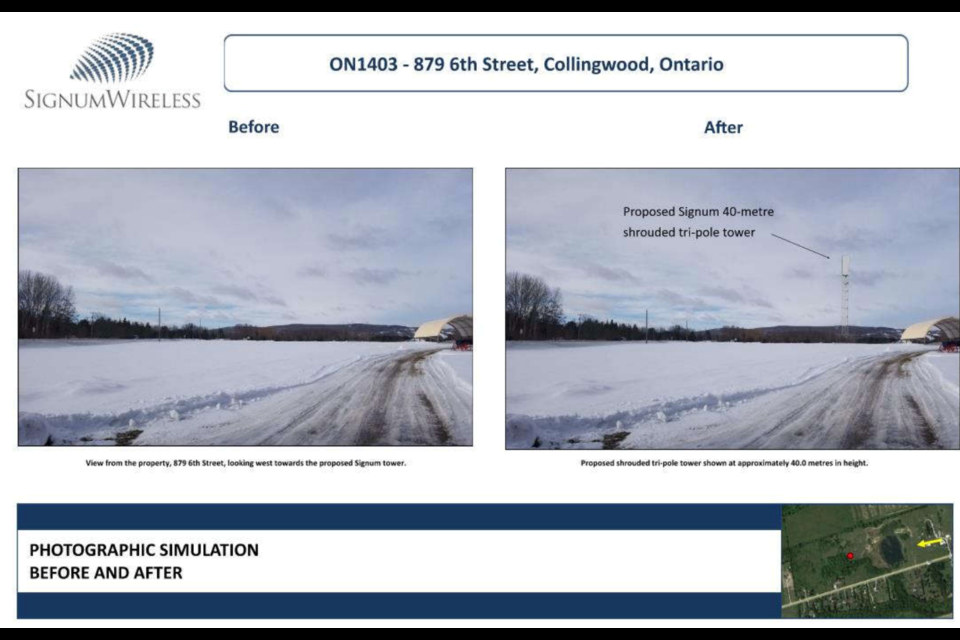A council standing committee was split over a request for a new cell tower near the western border of Collingwood, leaving the vote over the town’s endorsement up to full council.
Fontur International Inc. (Signum Wireless) is proposing a 40-metre tall radiocommunications tower at 879 Sixth Street in Collingwood, with the initial application submitted in September 2020. There was virtual public meeting on Aug. 4, 2021, but nobody attended. Two property owners submitted letters in opposition and one called town hall to express support.
Two of the four members of the development and operations standing committee, Coun. Yvonne Hamlin and Coun. Deb Doherty, voted against the application.
Both were supportive of a cell tower in the area, but wanted the proponent to do more to camouflage the tower.
Both Hamlin and Doherty raised the concept of a tower disguised to look like a tree, or one that looks more like a flagpole instead of a tripod design.
Coun. Kathy Jeffery and Mayor Brian Saunderson voted in favour of the request as is, citing they wanted to prevent delaying the application because the area is in a coverage gap.
The towers have to be approved by Industry, Science, and Economic Development Canada, but part of the process involves getting the town to approve what’s called a “concurrence” for the tower.
A concurrence amounts to a council agreement or endorsement of the tower and the proposed location.
According to Collingwood’s planning director Summer Valentine, the decision to approve the tower is a federal one, but the town’s concurrence is taken into account for final approval.
Town planner Justin Teakle told council’s development and operations services standing committee during the meeting on Jan. 17, the town’s protocol for radiocommunications towers gives preference to co-locating the devices on existing towers, or if it’s a new tower, the order of preference follows: public lands then private industrial lands.
The property on Sixth Street is neither as it is zoned rural and environmental protection. The tower is proposed in the rural zoned portion of the property, away from the environmentally protected areas.
“Given that there is no nearby industrial land to co-locate the proposed tower and the documented coverage gap in the area without co-location options, staff are supportive of the proposed tower location,” said Teakle.
Staff did ask for some changes to the proposal during the pre-consultation stage. The original design was a 50-metre tower in a lattice, triple staff design.
Teakle said staff raised concerns this design was “less sensitive to the context of the site” because of the adjacent residential lands. Staff asked for a 30-metre tower and a “stealth” design.
Shorter towers, however, reduce the coverage area reached by equipment mounted on them, increasing the need for towers elsewhere.
The revised proposal is for a 40-metre tower with a shrouded triple design, which would include a screened area at the top of the tower.
Carriers are required to co-locate on towers available, so this tower located in the area identified as lacking coverage, will increase coverage by all network carriers that lease space on the tower.
The vote will be before council on Monday, January 31. You can read the staff report on the radiocommunication tower application here



